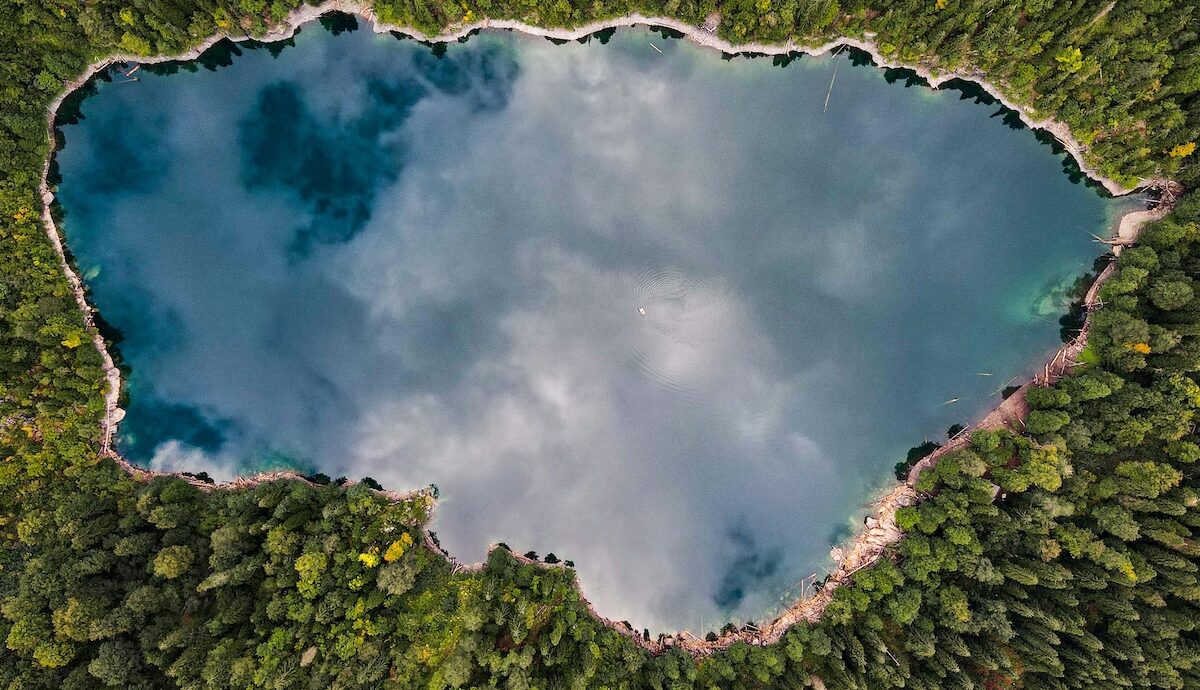To keep a waterbody in the best condition possible, it helps to know its measurements. Once you know, you can work out how much aeration, pumping, or filtration power you’ll need. And, it’ll help you apply the right amount of probiotics (like Biostim), flocculants, and other treatments.
Plus, it can also make fish stocking easier as too many fish in too little water is a recipe for poor water quality and stressed fish. Without the right measurements, it’s easy to under-size equipment or over-apply chemicals.
In this blog, we’re breaking down exactly how to calculate the volume of water in a dam or pond. We’ll give you actionable advice on how to work it out for the best, and most accurate results.
What You’ll Need Before You Start
- A long pole or weighted string to measure depth
- Access to Google Maps
- A calculator
Standard Volume Units:
- 1 cubic metre = 1,000 litres
- 1 acre = 4,047 m²
An Important Note on Volume and Surface Area
Since most water treatment plans are based more on surface area than volume, it’s important to know this before you calculate your dam or pond’s volume.
Depth does matter, but it plays a secondary role because most of the biological activity in a waterbody happens within the first two metres. And not much happens between 2 m down and the very bottom of your dam or pond.
At the bottom, there’s some activity, but it’s nowhere near as significant as what happens at the surface. This means that a waterbody 4 m deep will likely need a very similar treatment plan to one that’s 6 m deep.
Where depth really matters is in shallow ponds or dams. This is because shallow water heats up quickly and gets more exposure to UV light. It also experiences a lot more activity, like algae growth, weeds, and nutrient breakdown, all in a smaller volume of water. These systems need a lot more attention because they’re harder to treat!
Depth is also important for sizing up the aeration system you need. Sub-surface aerators, for example, are much more effective in deeper water. The further up the bubbles travel, the larger and more effective they become at mixing and aerating the surface water.
In shallow water, some aeration systems may not perform as well, so knowing your depth helps you choose the right system.
For this reason, we usually focus more on surface area and depth rather than volume. However, knowing your volume is still useful (especially for ponds), which are typically shallower than 2 m.
Step 1: Measure Your Average Depth
To measure depth, pick several points spread evenly across your waterbody. For accuracy, aim for 5-10 locations, especially if you’re dealing with a larger dam. If needed, use a boat or canoe.
Here are three common methods:
Option 1 – Long Stick
Use a long stick or pole with measurements marked on it to take depth readings.
Option 2 – String and Brick
Attach a string to a weighted object (a brick will work well). Mark the string at 1 m intervals with tape or use a measuring tape to record depth after lowering it into the water.
Option 3 – Technology Tools
If you have access, use a depth gauge, water level meter, or echo sounder for faster, more accurate results.
Once you’ve collected your readings, add them together and divide by the number of points and this will give you the average depth.
Step 2: Measure Your Surface Area
The easiest way to calculate surface area is with Google Maps.
Option 1 – Google Maps Area Tool
- Open Google Maps and find your waterbody.
- Right click on a point along the edge and select Measure distance.
- Move along the outline of the pond or dam, right clicking to add points.
- Continue until you’ve traced the whole shape.
- When you finish, a white box will display the Total Area in square metres.
This method works best if your waterbody is visible and hasn’t changed size recently.
Option 2 – Manual Measurements
If Google Maps isn’t practical, you can measure manually. Choose the shape that most closely matches your dam or pond:
- Rectangle/Square: Length × Width = Area (m²)
- Circle: π × radius² (m²)
- Oval/Ellipse: π × (Length ÷ 2) × (Width ÷ 2)
- Irregular Shape: Break into smaller sections (e.g. rectangles, circles, triangles), calculate each area, then add them together.
Step 3: Calculate Your Volume
Once you know your average depth and surface area, it’s easy:
Average Depth (m) × Surface Area (m²) = Volume (m³)
Remember:
- 1 cubic metre (m³) = 1,000 litres
- 1 acre = 4,047 m²
Final Thoughts
Knowing your dam or pond’s volume is helpful, especially for ponds when you’re sizing up a pump or planning treatments.
But, for larger waterbodies and when choosing aeration systems, surface area and average depth usually take the lead and matter more.
Depth is particularly important for ensuring you choose the right aerator, especially since some are better for shallow water, while others perform best in deeper conditions.
Get Free Help with Treating Your Water
Working out your waterbody’s size is just the first step of finding the right treatment plan. Other factors come into play, like temperature and nutrient levels. What the water is actually used for plays a part too. For example, some waterbodies are used for swimming and others are used for livestock or irrigation.
At Water Quality Solutions, we offer free customised water treatment plans. We’ll help you match the right aeration system, treatments, and approach based not only on your dam’s size, but also on its unique conditions.
Get in touch with us today and we’ll be happy to help.


